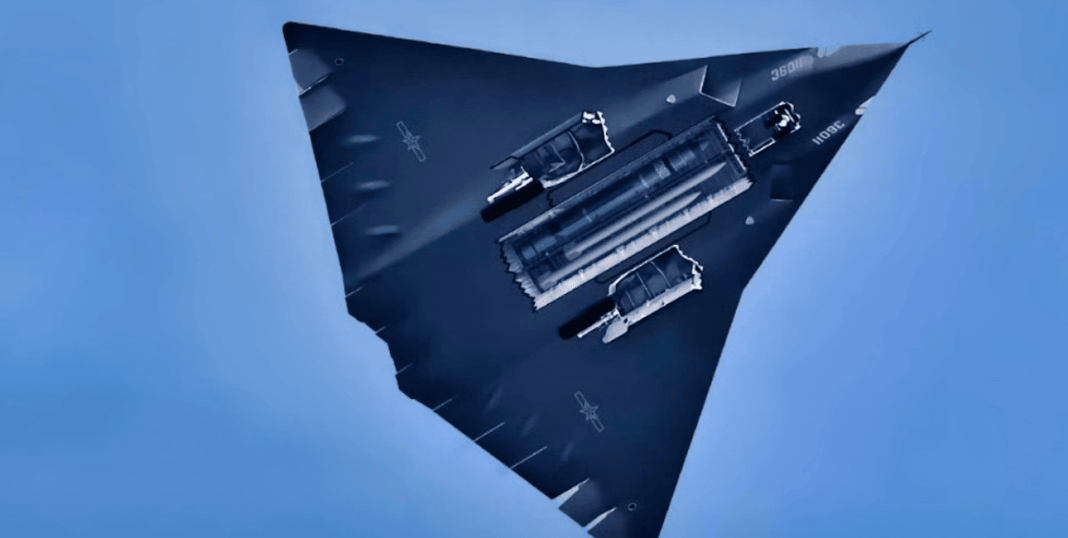Recent reports suggest that China may accelerate the delivery of its latest stealth fighter jets, the J-35A, to Pakistan, stirring fresh concerns about the shifting balance of air power in South Asia. Pakistan’s Foreign Minister and Deputy Prime Minister Ishaq Dar is said to have finalized the logistics and financing details for this deal during his recent visit to China, following India’s Operation Sindoor — a military campaign that struck deep into terrorist and militant infrastructure.
The China-Pakistan Fighter Jet Deal: Reality or Rhetoric?
While official timelines placed the J-35’s delivery to Pakistan no earlier than 2029, the recent push for fast-tracking raises questions. The J-35, also known as the Shenyang J-31, only recently entered production, making rapid large-scale deliveries challenging.
Some analysts speculate that Pakistan’s military rhetoric may aim to bolster domestic morale after Indian strikes. Moreover, Pakistan’s economy, heavily dependent on IMF aid, casts doubts on its ability to finance such costly hardware without substantial Chinese subsidies or discounts — presumably in appreciation of Pakistan’s contribution to Operation Sindoor, which featured Chinese jets and missile weapons.
This potential influx of advanced stealth fighters could significantly alter air dominance in the subcontinent, reigniting debates within Indian strategic circles about the urgency to strengthen India’s own air capabilities.
India’s Fifth-Generation Fighter Ambitions: The AMCA Project
India’s indigenous response to the fifth-generation fighter challenge is the Advanced Medium Combat Aircraft (AMCA), currently slated for induction around 2035. Designed as a stealthy, multirole, single-seat, twin-engine air superiority fighter, the AMCA aims to incorporate modern features such as supercruise, advanced avionics, and electronic warfare capabilities. Its development is underway through a public-private partnership involving the Aeronautical Development Agency (ADA), Hindustan Aeronautics Limited (HAL), and Indian private firms.
However, as China accelerates the export of its fifth-generation J-35 stealth fighter to Pakistan, India faces heightened urgency. The J-35, with its radar-evading design and networked warfare capabilities, could soon give Pakistan a technological edge that complicates India’s traditional air superiority. While the AMCA promises to be a significant step forward, its timeline is lengthy, and concerns remain over delays in related projects like the LCA Mk1A. In contrast, the J-35 is expected to enter Pakistani service before AMCA production begins, creating a potential capability gap. Given the rapid buildup of Chinese airpower and the J-35’s deployment, India is evaluating whether it should seek an interim fifth-generation fighter or join international programs to develop sixth-generation aircraft.
What Defines a Fifth-Generation Fighter?
The era of fifth-generation fighters began with the US F-22 Raptor in 2005. These aircraft are characterized by:
- Stealth: Low radar cross-section using advanced materials and shaping.
- Advanced Avionics: Unmatched situational awareness is provided by IRST sensors, fused sensor data, and multifunction AESA radars.
- Network-Centric Warfare: Real-time data sharing and electronic warfare capabilities.
- Supercruise: Sustained supersonic flight without afterburners.
- Internal Weapons Bays: To maintain stealth profiles.
- Enhanced Maneuverability: Thrust vectoring and advanced aerodynamics.
These features provide a “first-look, first-shot, first-kill” advantage critical in modern aerial combat.
China Enters the Next Era of Naval Power as Reports Suggest J-35B EMALS Launch from Fujian
China’s Growing Fifth- and Sixth-Generation Fleet
China already fields nearly 300 J-20 fifth-generation fighters and is developing newer sixth-generation jets, such as the Chengdu J-36 and Shenyang J-50, unveiled in December 2024. These advanced platforms incorporate AI, data fusion, and network-centric warfare technologies, reflecting China’s significant investment in next-generation air combat. Alongside these developments, the J-35 is being positioned not only as a stealth fighter for China’s aircraft carriers but also as an export-oriented platform, with Pakistan expected to be a major recipient. The inclusion of the J-35 in China’s broader airpower strategy underscores Beijing’s focus on saturating regional airspaces with low-observable, multirole fighters designed for contested environments.
The Global Sixth-Generation Fighter Race
Globally, the race for sixth-generation fighters is intensifying. These platforms are expected to feature:
- AI-assisted manned and optionally unmanned operations.
- Modular designs for rapid upgrades.
- Directed energy weapons and enhanced electronic warfare suites.
- Integration with drone swarms and space assets.
- Extreme network connectivity for battlefield dominance.
Prominent initiatives include the Franco-German-Italian Future Combat Air System (FCAS), the UK-Japan-Italy Global Combat Air Programme (GCAP), and the US Boeing F-47 NGAD. It is anticipated that these combatants will go into service in the 2030s and 2040s, respectively.
Russia’s Su-57 and India’s Options
Russia’s Su-57, an operational fifth-generation fighter, represents another mature platform but with limited global presence. India originally participated in the Indo-Russian FGFA program but withdrew due to performance and cost issues. Currently, India continues to rely on the Su-30MKI and is pursuing the AMCA as its indigenous solution.
India’s Strategic Dilemma
India faces a multi-front security challenge from China and Pakistan, both upgrading their air capabilities with fifth-generation stealth fighters. While India’s AMCA project represents a long-term solution, the interim period demands urgent attention. Options include:
- Procuring an interim fifth-generation fighter from foreign partners.
- Accelerating indigenous projects like the LCA Mk1A.
- Joining international consortia to co-develop sixth-generation technology.
- Increasing the fleet of advanced 4.5-generation aircraft to maintain operational readiness.
India’s Ministry of Defense has formed high-level committees to address these shortages and explore collaborative strategies.

